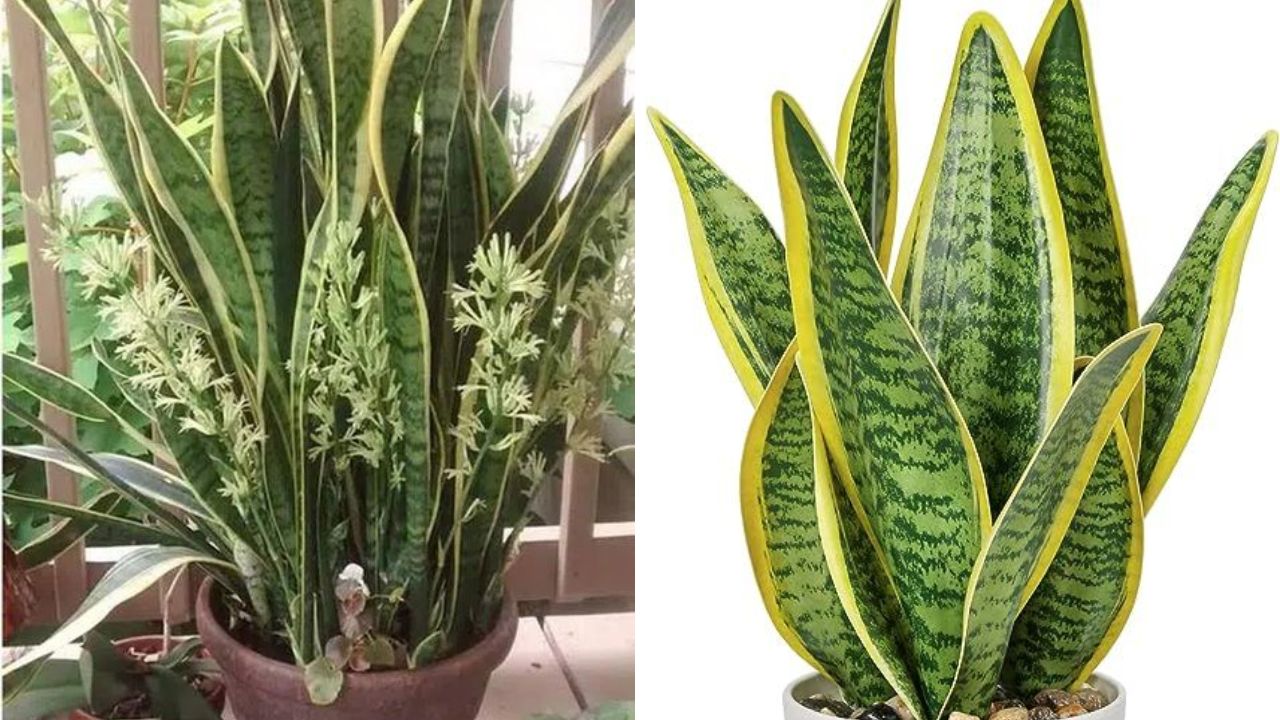The common term “meadow rue” refers to a number of Thalictrum species. Meadow rue is typically sown as seeds in the fall, or as potted plants in the spring. It grows slowly for a wildflower. The ease of growing meadow rue varies depending on the species, although most may be grown in a variety of soil types in a mild climate with dappled light. The delicate leaves of the meadow rue plant has a distinctive texture and color that makes it worth waiting for with the right care.
Table of Contents
ToggleMeadow Rue Plant Overview

| Common Name | Meadow rue |
| Botanical Name | Thalictrum spp. |
| Family | Ranunculaceae |
| Plant Type | Herbaceous perennial |
| Mature Size | 1–8 ft. tall, 1–5 ft. wide (varies by species) |
| Sun Exposure | Full sun to partial shade (varies by species) but most prefer partial shade |
| Soil Type | Well-drained, rich, humusy |
| Soil pH | Acidic to alkaline (varies by species) |
| Bloom Time | Spring, summer (varies by species) |
| Flower Color | Light purple or pink, white, yellow (varies by species) |
| Hardiness Zones | USDA 3–7 (varies by species) |
| Native Area | Northern Hemisphere |
Meadow Rue Care

If a few care guidelines are followed, growing meadow rue should be rather simple.
- Choose a location for your plants that gets some shade or dappled sunlight.
- Make sure the soil drains effectively while remaining rich and moist.
- Water the plant just enough to keep it moist but not soggy.
- Any species taller than five feet should be staked.
Light Requirements
While species-specific requirements for sunlight vary, most meadow rue varieties prefer partially shaded or dappled light environments, while plants may withstand full sun. Near the southernmost point of the hardiness range, the need for shade becomes more apparent. Certain species can thrive in almost complete shadow.
Soil & Potting
Originally from damp woodlands and seasonal marshlands, many varieties of meadow rue thrive in rich, moisture-retaining soil when grown in gardens. Given frequent irrigation, a well-drained, average, medium-moisture soil will also work perfectly for plants.
Watering
Meadow rue plants should be kept damp but not wet for optimal results. The plant can develop fungal issues if it is left in standing water, but it is not susceptible to illnesses or insect infestation. If planted in regular garden soil that drains well, it needs one inch of water every seven days to stay healthy. Grown in direct sunlight, it will need extra water.
Temperature and Environment
While some species of this perennial plant may survive as far north as zone 3 or as far south as zone 9, the majority of species prefer the moderate environment of USDA cold hardiness zones 4 to 7. Deep South summers are typically too hot and muggy for this plant. In hotter climes, a thick layer of mulch can aid the plant by keeping the soil cool, while in the far north, it can protect it from the harsh winters.
Fertilization
If the soil is sufficiently rich, these plants don’t need to be fed. An annual application of balanced fertilizer may be beneficial for poor soils.
Types of Meadow Rue
Selecting a species of meadow rue is more important than picking between specific cultivars when choosing a kind. When named cultivars are found, they are typically the outcome of attempts to enhance native species by increasing the quantity or color of the blooms. Since many of these species aren’t available at regular nurseries, you’ll frequently need to shop at specialty native plant nurseries or internet shops.
Low meadow rue(T. minus): This plant features green/gray-green foliage with greenish-yellow blooms. It is hardy in USDA zones 3 through 7 and reaches a height of 12 to 24 inches.
Kyoshu meadow rue (T. kiusianum): This traditional lavender type is hardy in zones 6 to 8 and is native to Japan. It reaches a modest height of four to six inches.
Columbine meadow rue (T. aquilegifolium): It is hardy in zones 5 to 7, grows two to three feet tall, and is well-known for its mauve blossoms. ‘Album’ is a well-liked cultivar with white flowers. One variation with blue-purple blooms and black flower stalks is called “Black Stockings.”
Yellow meadow rue (T. flavum): This kind is indigenous to the eastern Mediterranean and Europe. It is hardy in zones 5 to 8 and reaches a height of three feet.
Dusty meadow rue (T. speciosissimum): Buttery yellow blooms adorn this shrub, which can reach a height of four to six feet. It is native to Spain and Northwest Africa and more heat hardy than many kinds.
Lavender mist meadow rue (T. rochebrunianum): Lavender mist is also indigenous to Japan, and it can reach an uncommon height of 6 to 8 feet. It is hardy in zones 4 through 7, and it has an abundance of lavender violet flowers with yellow filaments.
Pruning

After the flowers fade, you can tidy up the plant’s appearance by cutting back flower stalks to make the foliage stand out. Don’t expect a months-long bloom time; deadheading may prolong the bloom period substantially.
If the summer heat causes the plant to turn yellow, it can be trimmed back to the ground. The plant is not damaged by this type of trimming, and it will grow back stronger the next year.
Propagating Meadow Rue
Meadow rue can be spread via seeds or division. It is not fond of being relocated, much like many other shade-tolerant flowers. Allow the plant to get established after around five years before dividing it, unless it is thought to be required to revitalize the clump or generate new plants. How to do it is as follows:
- Use a shovel to remove the entire root cluster in the early spring when new growth is just getting started.
- After removing any loose dirt with a brush or watering, split the root clump into portions, with a healthy clump of roots and a section of crown in each.
- Replant the fragments in the appropriate places right away. Since the pieces will grow into enormous plants, if planting in groups, make sure to space them far apart.
How to Grow Meadow Rue From Seed?
Although it will take some time for the seeds to germinate and produce full plants, meadow rue plants are simple to grow from seed. Since commercially marketed seeds frequently have a reduced germination rate, it is actually preferable to plant seeds that have been harvested from flower heads. The secret is to be patient. Direct seeding in the garden might take up to a year for seeds to germinate and almost three years for them to reach flowering maturity. You can plant seeds at a shallow depth in the places of your choice, or you can just scatter them across the area you wish the plants to naturally occur in.
Potting and Repotting Meadow Rue
Meadow rue is a perennial that is rarely utilized in container culture due to its slightly erratic shape and enormous size. If you would like to give it a try, use a large pot that drains well and fills it with regular potting mix. Plants growing in containers will require more frequent watering. Repotting these slow-growing plants only has to happen every few years.
Plants planted in containers should be moved to protected outdoor spaces during the winter, but in regions with extremely cold winters, don’t be shocked if they disappear. The roots in containers exposed to the elements are more vulnerable to cold.
Overwintering
As winter draws near, trim back flower stalks and foliage to just above ground level. If the summer heat kills the leaves, this can also be done sooner. In order to secure the survival of a borderline-hardy species grown in a northern region, it can be beneficial to apply a thick layer of winter mulch to mitigate the effects of winter freeze-thaw cycles.
Common Pests and Plant Diseases
Despite its dainty foliage and blossoms, meadow rue is far more robust. It is resistant to deer and rabbits and is not frequently plagued by any severe pest or disease problems. Rust and powdery mildew are the most prevalent. To avoid this, make sure there is adequate, healthy air circulation at the planting site. Snails and slugs could eat the leaves.
How to Get Meadow Rue to Bloom?
Bloom Months
Meadow rue usually blooms in the spring and summer, though the exact timing will vary on the type you are planting.
How Long Does Meadow Rue Bloom?
The majority of meadow rue varieties have a three-week bloom period.
What do Meadow Rue Blooms Look and Smell Like?
Because of its similarity to columbine in terms of leaves and hanging blooms, people frequently confuse this plant for it. Little yellow, white, lilac, or lavender flowers are possible. Depending on the variety, they may smell a little.
How to Encourage More Blooms?
If the basic requirements of meadow rue are satisfied, which include rich soil, moderate shade, and continuous rainfall, it usually blooms quickly. If you notice that your plant isn’t blooming as often as it could, try giving it more frequent irrigations and a little feeding with organic fertilizer, like compost mulched over the root zone.
Caring for Meadow Rue After it Blooms
As winter draws near, you can make significant pruning cuts once the blooming season has concluded.
Deadheading Meadow Rue Flowers
Deadheading faded blossoms is not required, but if the plant can focus its energy on newer blossoms, it may assist to extend the bloom time overall.
Common Problems with Meadow Rue
Meadow regret pants hardly give you any trouble. Staking any plant taller than five feet is advised because taller kinds have a tendency to tilt as they mature. Arranging in groups of three or more allows the stems to support each other as they would in the nature, which is a more holistic approach. As most species reach a width of two to four feet, plant them in your garden with appropriate spacing.
Also Read: Zebra Grass Complete Guide To Grow And Care





